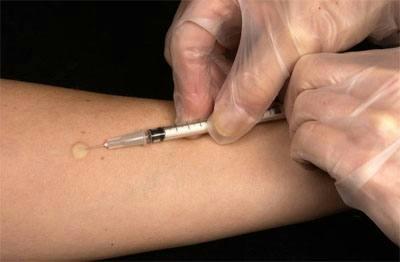You are here
‘109 tuberculosis cases detected among Syrian refugees’
By Khetam Malkawi - Mar 12,2014 - Last updated at Mar 12,2014
AMMAN — A total of 109 tuberculosis (TB) cases have been detected among Syrian refugees in Jordan so far, a Health Ministry official said on Wednesday.
Khaled Abu Rumman, director of the National Programme to Stop TB, said 40 of the total cases were diagnosed among residents of the Zaatari Refugee Camp, while the rest were among those living in host communities.
In addition, four of the cases were diagnosed as multi-drug resistant.
Abu Rumman said the ministry supervises the medication of all refugees diagnosed with TB as part of the “Public Health Strategy among Syrian Refugees” launched earlier this year.
He noted that the strategy — launched in cooperation with the International Organisation for Migration, the World Health Organisation (WHO) and UNHCR — seeks to reduce TB transmission among Syrian refugees.
The official told The Jordan Times that even before the refugee crisis started in 2011, the prevalence of TB among Syrians was 24 cases per 100,000, while in Jordan the rate is six per 100,000 people.
“We also believe that there are more than the 109 TB cases we have diagnosed among Syrians in Jordan,” Abu Rumman added.
He noted that the transmission of TB is high among Syrian refugees due to their living conditions and the interruption of the TB prevention programme in Syria because of the crisis.
TB is an infectious bacterial disease caused by Mycobacterium tuberculosis, which most commonly affects the lungs, according to WHO. It is transmitted from person to person via droplets from the throat and lungs of people with the active respiratory disease.
In healthy people, infection with Mycobacterium tuberculosis often causes no symptoms since the person’s immune system acts to “wall off” the bacteria.
The symptoms of active TB of the lung are coughing, sometimes with sputum or blood, chest pains, weakness, weight loss, fever and night sweats. Tuberculosis is treatable with a six-month course of antibiotics.
Related Articles
Boko Haram launched its first major attack in Niger on Friday, triggering a forceful response from regional troops who claimed to have killed more than a hundred of the Islamists.
One hundred cases of tuberculosis (TB) were diagnosed in Jordan in the first three months of the year, 50 of them among non-Jordanians, a Health Ministry official said on Sunday.
AMMAN — Deputy Prime Minister for Services and Minister of Education Mohammad Thneibat on Saturday attended a ceremony held by the Queen Ran
















